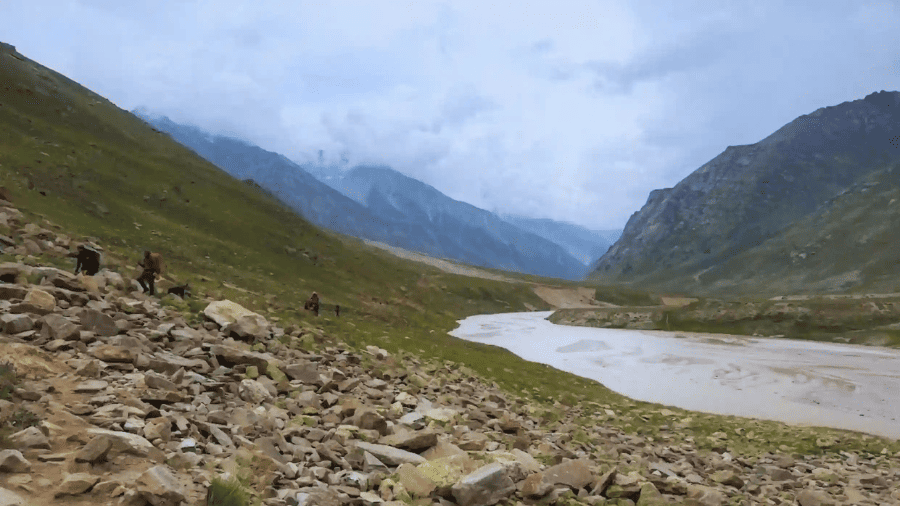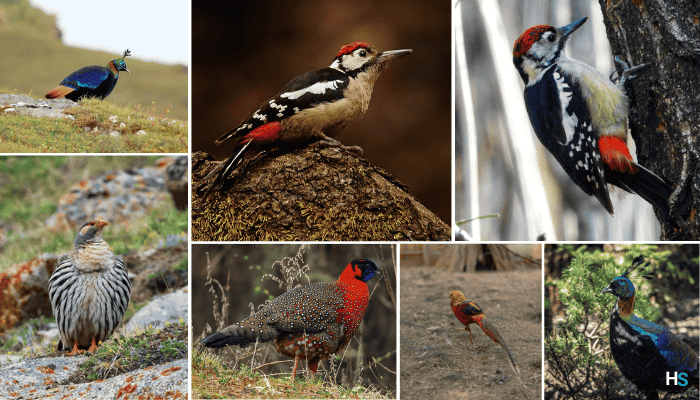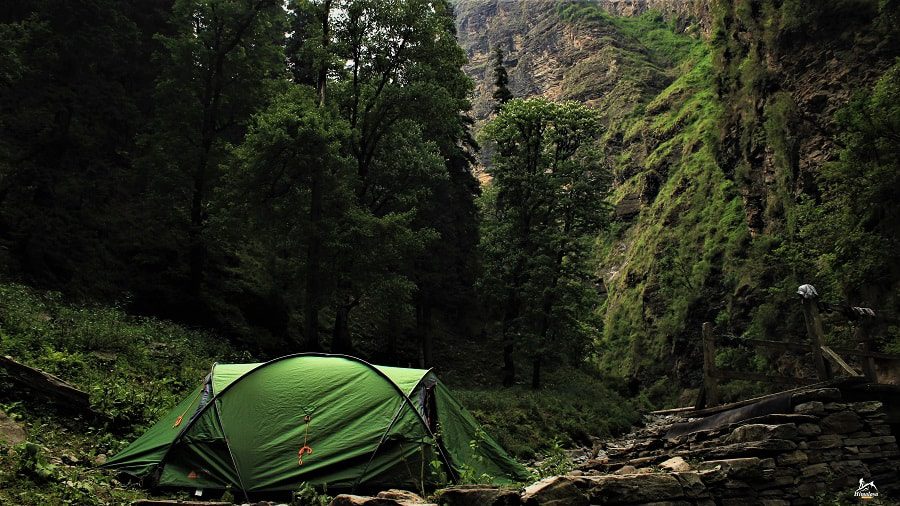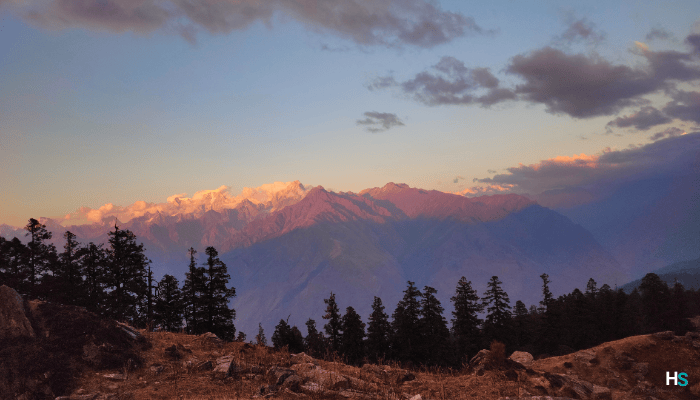
Har Ki Dun Trekking : Owns Some Of The Exquisite Sights - A Brief Guide
We’re going to discuss Har Ki Dun Trekking, famed with multiple names like Har Ki Doon, Hari Ki Doon, and much more. This trek is gem among the trek in Himalayas.
The Himalayas have always been on top of everyone’s bucket list, whether a local or an avid novel climber. Its aura, age, and beauty make the range more heavenly. As experts say, the beauty of the Himalayas lies in the eye of the beholder. You can’t take anything away from how majestic each mountain looks. From foothills to snow-clad peaks, everything tends to amuse a climber.
Har ki Dun Trek, This multiple-day trek tends to grab the attention of many adventurers worldwide. Moreover, it’s an ideal escape to the impeccable terrains of the mighty Himalayan region. Speaking of which, the valley of Uttarkashi area, along with the catchment area, also serves as a source of the river system of Yamuna. When it comes to this unconventional trek, Har Ki Dun is one of the only extended treks with the nearest rail and air connectivity in the valley capital of Uttarakhand, Dehradun.

Furthermore, a traveler would have to take a 10-hour drive from the capital city to reach Sankri, serving as the base camp for the Har Ki Dun trek. Following the trail, you’ll reach Puani Garaat, which takes you through Taluka, which is considered a serene hamlet with Kumaoni cultures and traditions.
After reaching Puani Garaat, the hike starts toward Kalkattiyadhar. Besides, Trek to Har Ki Dun is almost 10 kilometers from this place. Plus, it usually takes around 5 hours to reach the destination. However, while returning, you will clear through another Himalayan village, Osla, before reaching Sankri and then Dehradun in the end.
Overview:
Trek Duration – 7 to 8 Days
Region – Uttarakhand
Difficulty Level – Moderate
Trek Distance – 44 km
Max Height – 12,000 ft
Base Camp – Sankri
Ideal Time – Throughout the year, except monsoon. This region experiences heavy snowfall between December to April.
Brief Itinerary of Har ki Dun Trekking-
Such an expedition to a quiet and serene winter paradise takes you through old villages. Here you can experience the blend and amalgamation of local practices and cultures that can help them meet their daily complexities in these rough terrains. While every individual might choose his or her itinerary, we can offer a rough picture of what the trek might look like. So, let’s begin.
Day 1: Drive from Dehradun to Sankri (220 kilometers drive)
Day 2: Leave from Sankri to Pauni Garaat through Taluka (12 kilometers drive to Taluka, along with a 6-hour walk to Puani Garaat)
Day 3: Leave from Puani Garaat to Kalkattiyadhar (8 kilometers walk that usually takes 6-7 hours)
Day 4: Start from Kalkattiyadhar to Har ki Dun and return (10 kilometers walk that usually takes 9 hours)
Day 5: Leave from Kalkattiyadhar to Puani Garaat through Osla (8 kilometers walk that typically takes 5 hours)
Day 6: Leave from Puani Garaat to Sankri through the route of Taluka (10 kilometers trek, coupled with an hour’s drive to a guest house or homestay)
Day 7: Drive from Sankri to Dehradun (220 kilometers drive)
Places You Can’t-Miss Out On
If you’re running clueless in a positive direction, we have more positive news for you. The list comprises places you’ll visit during the trek.
Govind National Park
Did you know Govind Pashu Wildlife Sanctuary is a protected region that tends to cover an area of almost 960 sq km? Besides, the region houses the Supin and Rupin valleys, making the catchment for Yamuna’s primary tributary. The national park is under sup-tropical, alpine climatic zones, temperature, and features diverse flora and fauna. This does not end here. With a bounty of rhododendrons, Himalayan cedar, yew, spruce, beech, and spikenard, a traveler can easily spot more than 20 types of mammals and approximately 100 bird species.
Taluka village
When talking about Taluka village, it’s almost 10 kilometers from Sankri. This pristine hamlet puts forth a cluster of wooden homes where locals welcome travelers for meals and night stays at a low price. This allows them to earn some income and offers a traveler an experience of a lifetime. Moving on, with the resonation of the gushing river and endless conversations about the area, this village is one of the best places to take a break and explore the remote lifestyle and cultures of Har ki Dun Villages.
Someshwar Mahadev Temple
This temple is located in Sankri and is one of the religious sites that host annual fairs and festivals. Here you’ll find the pahadi-theme architecture of temples. These exhibit pure wooden art carved through Deodars. If you did not know, the temple also belongs to the era of the Pandavas. What’s more? You can spend many hours at the temple while capturing the views of Swargarohini peaks and nearby ranges.
Har Ki Dun Valley
Well, it’s a bit obvious, but the valley is perched at 3500+ meters, covered under thick snow between the months of December and March. Moreover, the valley also provides a traveler with magnificent vistas of Swargarohini Peaks, Bandarpoonch, Kala Nag Peak, and many more we’re yet to find. Additionally, Har Ki Dun Valley is rated as an offbeat valley when it comes to the Garhwal Himalayas.
Things to do while Har ki Dun trekking-
Wondering what you can do while trekking in the Har Ki Dun region? We have shortlisted some options for you.
- Camping
When you’re trekking toward the destination, you can choose to camp beside the river between the lush green lines of the forest. Refreshing your mornings with the sound of your surroundings, spotting rare bird species, sleeping under the glittering sky belt, and camping activities in and around Har Ki Dun hold something special for you. This is a place where you can experience beauty at its finest.
- Hiking
You’ll have a significant chance to explore valleys and waterfalls while hiking through the rugged terrains of this trek. Leading to spellbinding sights of snow-clad mountain peaks, you can leave for short treks during the day and visit nearby villages if you intend to share brief meals with people from the village. Moreover, if you wish to experience more, consider staying with the locals and get revived for the journey ahead. Sankri, Osla, and Taluka are some of the best areas to understand the customs, regional culture, and lifestyle.
- Bird-watching and Photography

Did you know that this specific trek is a paradise for travelers who love to stay amid nature? Here you can spot birds, comprising Green Magpie, Great Pied Hornbill, Koklass-Pheasant, Kalij-Pheasant, Cheer-Pheasant, Rufous-throated Partridge, Hill-Partridge, Ultramarine Flycatcher, Oriental Turtle Dove, Verditer Flycatcher, Rufous Sibia, Rufous-bellied Niltava, Great Barbet, and many more. Want to remember the journey? Remember to bring a smartphone, DSLR, or GoPro.
How to Reach?
Are you coming from far-off cities? Well, do not fret. The capital of Uttarakhand, Dehradun, is approximately 220 kilometers from the base camp, Sankri. Mentioned are ideal ways to reach Sankri to commence your Har Ki Dun trek.
Take the air route.
If you’re coming via air, Jolly Grant Airport is the nearest one, with regular connectivity from Chandigarh, Shimla, Delhi, and many more big cities. You’ll come across the taxi and bus stand when you have landed here. From there, you can board either of the transport. But know that the route from the airport to Sankri might take ten hours. So, be prepared.
Take the rail route.
The rail connectivity from other cities to Dehradun is quite good. It only takes an overnight journey from the national capital, Delhi, to reach the winter capital of Dehradun. You can board a bus or take a private taxi to Sankri.
Take the ground route.
Known as the 2nd busiest route in the country, Dehradun is very well connected. You can board a private or government bus or simply get a private taxi from Delhi or other cities, such as Rishikesh, Chandigarh, Haridwar, Amritsar, Shimla, etc., to reach Dehradun.
When should you visit for Har Ki Dun Trekking?
The best time to embark on the Har Ki Dun trek is between the months of April-June and September-December. On the other hand, if you’re interested in snow trekking, consider visiting Har Ki Dun in Feb or March. Also, ensure to spare significant time in acclimatizing to high altitudes.
Summer
In summer, the weather remains pleasant. Moreover, the sky is clear with bright days, making your entire journey comfortable. In addition, the temperature of this region might dip below 0 degrees during the night.
Winter
Did you know winters in Har Ki Dun are no less than immaculate? The area experiences heavy snowfalls. Moreover, the climb also gets challenging as accommodation options are relatively limited. So, consider bringing jackets, fleece, thermals, raincoats, etc. this is because the mercury levels might hit around -15 degrees.
Tips you need to know before commencing your trek.
Mentioned are some vital tips that should be remembered before planning the trek.
- Train your body at least a month prior.
- Keep adequate cash since there’s no ATM on the trekking route. This also includes the base camp.
- Consider planning your journey with experienced partners and book in advance.
- Do not climb during monsoons, as the trails and routes might be slippery.
Essentials and Gears
- Trekking pole
- 50-60 liters backpack with rain cover and comfortable straps
- Water bottle, thermos flask, and hydration pack
- Headtorch
- First aid kit
- Energy bars and dry fruits
- Disposable bags
- Hand sanitizers and disinfectants
About Author

Himalaya Shelter
Recent news

23 Dec 2025

20 Dec 2025

18 Dec 2025

16 Dec 2025

10 Dec 2025
Recommended Treks
